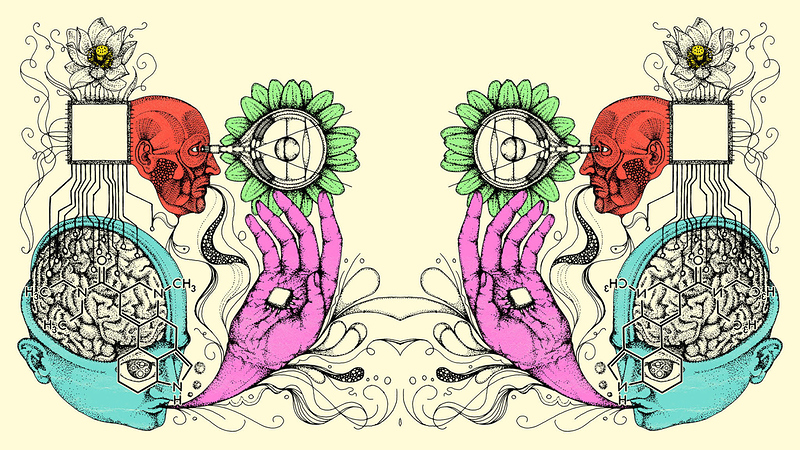At Real Life, Emma Stamm examines the growing popularity of psychedelic microdosing in Silicon Valley, and the related resurgence in scientific research on drugs like LSD and psilocybin mushrooms. She writes that while this research is uncovering some valuable new medical uses for psychedelics—such as treating depression—it’s also reducing these drugs to their mere medical and profit-making utility. The exploratory dimension of psychedelic experience is lost. With a nod to Mark Fisher, Stamm suggests that this dimension can play a role in envisioning a much-needed political transformation. Here’s an excerpt:
But these scientific, technocratic methods and outcomes seem misaligned with the spiritual rhetoric that accompanied these drugs in the past. If technology is producing a more complete picture of psychedelics, it’s also making them more difficult to view as fonts of mystical experience. Subject to FDA standards and with their effects purportedly rendered in high fidelity by digital imaging systems, LSD, mushrooms, and similar substances now appear decidedly of this world, stripped of their metaphysical patina. In an interview with medical anthropologist Nicolas Langlitz, psilocybin researcher Patrick Kossuth articulated the demystified view: “Let’s assume I’m having a beautiful trip,” he said. “I’m lying there, feeling well, seeing nice colors, interesting shapes, and the music sounds very special to me. I’m also having some unusual ideas. But at any moment of the experience, I know that I’m in this state because I took psilocybin. I rationally ascribe my experiences to the 5-HT2A receptor and not to some higher power. For this reason, I didn’t feel connected to anything supernatural.”
This mundane framing may be necessary to counter the misinformation spread in the late 20th century during the U.S.’s War on Drugs. Making psychedelics seem no more otherworldly than the chemical compounds compressed into tabs of Valium and Prozac would afford legitimacy to both the drugs and the scientists working on them. At a 2014 conference on psychedelic medicine, Jag Davies, director of communications strategy for the Drug Policy Alliance, said that his job was to “make drugs look boring.”
That’s not to say that they are boring. But that view clarifies the cost of hallucinogens’ new legitimacy. Subjective, spiritual experiences are rationalized or dismissed in favor of narrow instrumentalist accounts of the drugs’ efficacy. In Neuropsychedelia: The Revival of Hallucinogen Research Since the Decade of the Brain (2012), Langlitz documents how neuroscientists working with LSD tend to diverge from early proselytizers in how they envision psychedelics’ effects. In their view, psychedelics can’t open a gateway to a higher consciousness because such a thing doesn’t exist. Some of the researchers Langlitz consulted were not willing to share any thoughts at all on the place of mysticism in psychedelic experiences. Franz Vollenweider, then director of a psilocybin and ketamine research laboratory in Zurich, told Langlitz that “the mystification of drugs in the context of brain research makes such investigations appear dubious.” This is a far cry from how the earlier pioneers of psychedelics saw things. Langlitz recounts the perspectives of Walter Stace, a philosopher who dabbled with hallucinogens in the 1960s: “It’s not a matter of being similar to a mystical experience,” Stace said, “it is a mystical experience.”
Image by Daren Newman. Via the Financial Times.
